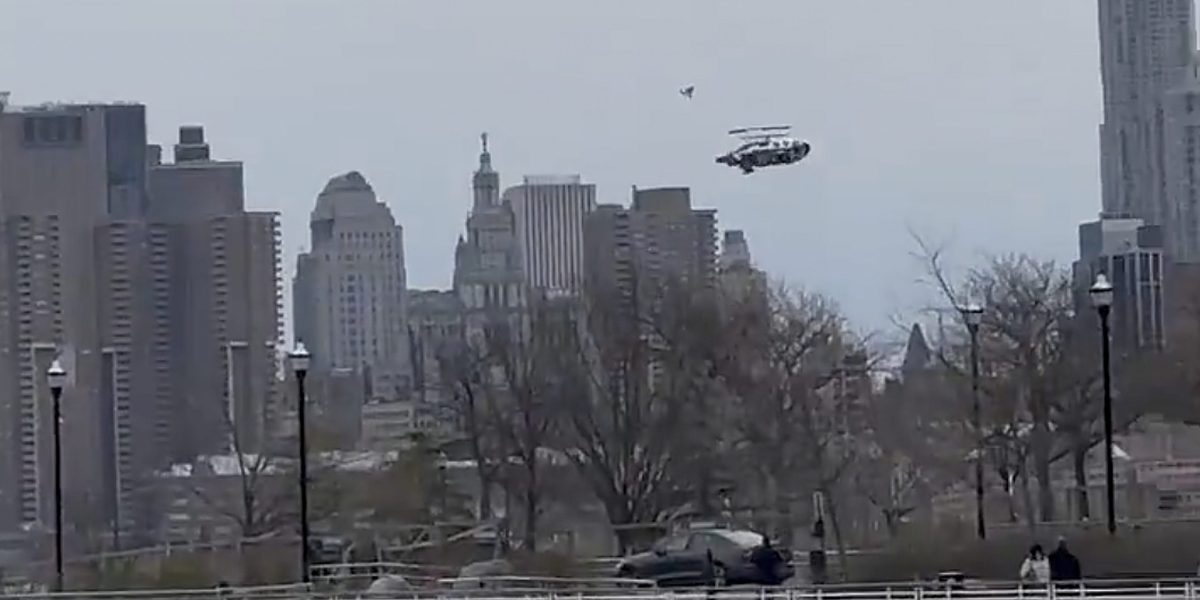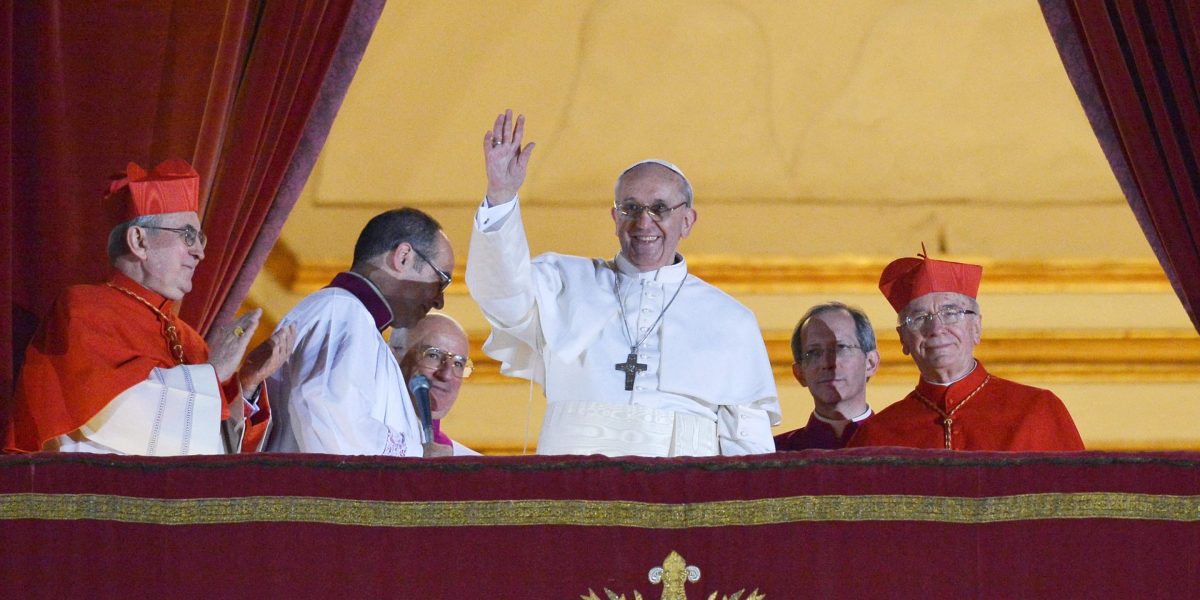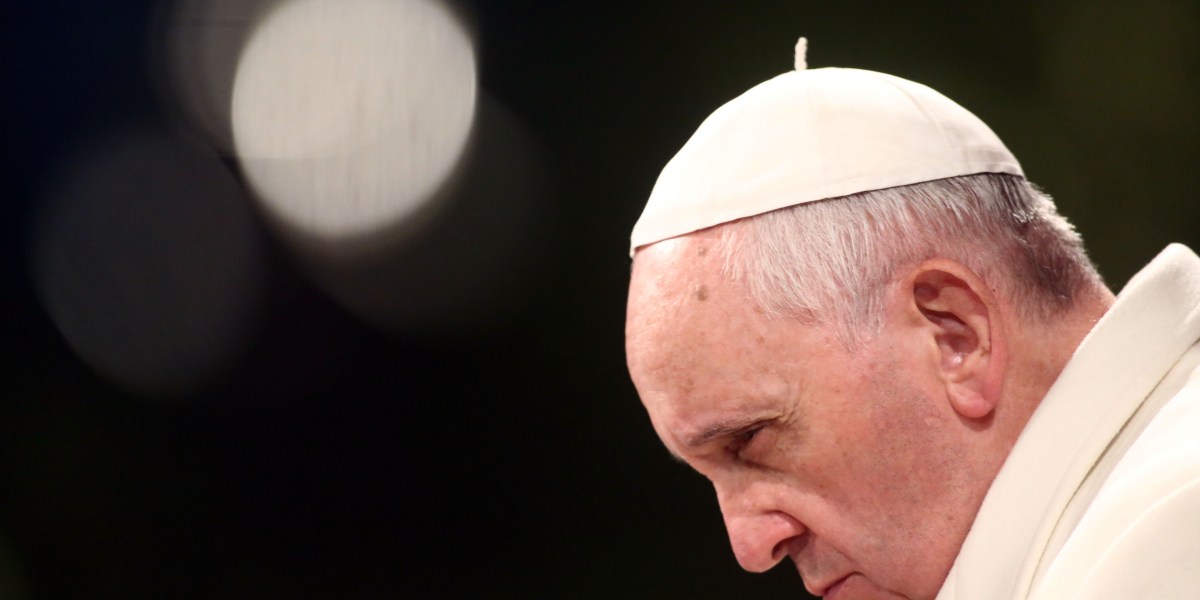Even on his deathbed, Pope Francis didn’t pause from pursuing a dogged campaign that distinguished his reign: reforming the Vatican’s infamously troubled finances. On February 27, the pontiff’s 13th day at Rome’s Gemelli Hospital suffering from exhaustion and bronchitis, the pontiff unveiled the formation of a high-level commission assigned to raise donations for helping plug chronic budget deficits. Francis launched the fund-raising enterprise as a gambit aimed at blunting demands by top officials in the Curia, his vast administrative arm, that the leader of the world’s 1.3 billion Catholics halt his drive for deep spending cuts. The bureaucrats bristled at the Pope’s recent draconian moves: Since 2021, he’d slashed salaries for the Church’s 250-odd cardinals three times. In 2023, he nixed the rich housing subsidies for elite staff, and last September for the first time in decades demanded that the Vatican set a rigorous timeline for achieving a “zero deficit” regime.
When Pope Francis passed away at age 88 on Easter Monday in his modest Vatican apartment, his brave campaign had made big strides, but stopped short of the promised land.
This writer began covering the Pope’s righteous charge right at the creation. In early 2014, I traveled to Rome for a firsthand view of all the new and historic financial guard rails and disciplines Francis was installing, as well as the influx of business experts he’d summoned across the globe to assist him. When Francis took office the previous year, just about everything that involved how the Vatican handled money needed fixing: the huge and ever-rising gap between revenues and expenses; the leadership dominated by clergy lacking expertise in accounting and investing; and a scandal-scarred reputation. The stain of corruption, or at least incompetence, lingered from the Banco Ambrosiano affair of the early 1980s, when financier Roberto Calvi scammed the Institute for Religious Works, a.k.a. the Vatican Bank, in a caper that cost the IOR $250 million and emptied a big portion of its reserves.
Days after his institution collapsed, Calvi’s body was found hanging under London’s Blackfriars Bridge; the British courts couldn’t determine whether the cause of death was suicide or murder. Calvi’s schemes duped his “buddy” who headed the IOR, Archbishop Paul Marcinkus, whom in the mid-1980s I interviewed at the IOR’s home in the ninth-century Gothic prison built by Pope Nicholas VI. The six-foot-eight Marcinkus, dubbed the Gorilla, had risen in the Vatican from a power base as Pope John Paul II’s bodyguard. During our meeting, he chain-smoked Camels and pontificated for hours about how the IOR was the Vatican’s biggest moneymaker courtesy of pocketing the “spread” between the tiny interest it paid the Jesuits and other religious orders for their deposits, and the much higher rates it garnered re-channeling those funds to European banks.
On Ambrosiano, Marcinkus insisted that charges he’d “guaranteed” the bank’s debts on behalf of the IOR was a bum rap, and that the Vatican only repaid the $250 million to safeguard its image. Shortly before, the Italian government had dropped an arrest warrant for Marcinkus that had exiled him for a year to the Vatican grounds, a liberation that perhaps explained his ebullient mood. “I may be a lousy banker,” he told me not-for-quotation; “but at least I’m not in jail.”
Francis quickly showed that in money matters, he was a new kind of leader
My sources were all business leaders newly appointed to aid in the Pope’s offensive. On background, they related a dramatic meeting in the summer of 2013 where Francis first addressed a dimension of his domain that he deemed crucial—its chronically stumbling role as a commercial enterprise. The pontiff had appointed a team of seven business leaders from around the world as a committee to pinpoint the problems and recommend specifics for a broad overhaul. They included the French executive heading asset management for U.S. mutual fund giant Invesco, the CEO of German insurer ERGO, the chief of Malta’s largest bank, and the former prime minister of Singapore.
Instead of holding the confab at the Apostolic Palace, the Renaissance showplace where pontiffs traditionally greeted visitors in high style, Francis ushered the distinguished guests into a nondescript conference room at the Casa Santa Marta, a five-story limestone guesthouse on the sub-luxury scale of a four-star hotel where the pontiff resided in a second-floor one-bedroom suite. No religious art or objects adorned the walls. Attired in a simple white cossack and metal cross, the Pope took the kind of highly managerial “I’m the boss” approach his invitees might have recognized from addressing their own lieutenants.
Speaking fluent Italian, pausing frequently so that a translator could repeat his words in English, the former cardinal of Buenos Aires stated that for his spiritual message to be credible, the Vatican’s finances had to be credible as well. The Vatican hadn’t overcome the practices formed by centuries of secrecy and intrigue to either manage its money efficiently, or issue a coherent accounting on where the money came from and where it was spent. His primary mission, the new Pope stressed, was helping the poor and underprivileged. The Vatican budget careening from small surpluses to yawning deficits undermined that goal by inhibiting charity. “When the administration’s fat it’s unhealthy,” he declared, adding that he wanted a far leaner and efficient organization that would prove “self-sustaining.” Getting there would require strict rules and protocols.
It particularly incensed the pontiff that the managers kept paying overruns on fixed price contracts, when the businesses should have eaten the excess billings. From now on, he admonished, when the Vatican gets a bill for a project where it’s the contractor who is legally responsible for the extra costs: “We don’t pay!” Like a great CEO, the Pope charted a clear strategy. As one participant characterized the command: “Let’s make money for the poor.” Francis finished by intoning, “I trust you. You’re the experts. I want solutions to these problems.” Pope Francis wasn’t a micromanager who’d study balance sheets, but he was a born leader expert at establishing clear objectives and choosing specialists needed to meet them—he’d rely on real bankers not amateurs in the Marcinkus mold. Then, without taking questions or extending pleasantries, he left the room.
On finances, Pope Francis proved the greatest of all holy reformers. But the Vatican’s budget woes persist to this day
Following the meeting, that prestigious board helped design a radically new architecture directed not by the religious leaders who’d run the machine for centuries, but seasoned managers and consultants from around the world. The new regime hired KMPG to install internationally accepted accounting principles replacing the old crazy quilt of standards, EY to scrutinize the books of the tiny nation’s stores and utilities, and Deloitte & Touche and Spencer Stuart to respectively audit the P&L and recruit fresh talent at the Vatican Bank. Pope Francis also established a new body called the Secretariat of the Economy that for the first time centralized all authority under a single agency and leader. Today, the top official is an MIT grad who has spent a long career in management positions for Catholic universities and prominent institutions of the church.
Tighter oversight brought new discipline to runaway spending and boosted investment returns, but didn’t end the Vatican’s long history of headline-grabbing misdeeds. In 2014, the cardinal who served as second-ranking official in the Secretariat of State schemed with still another shady Italian magnate to purchase shares in a London building; the Secretariat subsequently took full control of the property for the highly inflated price of roughly $400 million, then sold it a few years later at a $150 million loss. An investigation launched in 2019 discovered that many millions of Euros disappeared in kickbacks and self-dealing. But this time, the authorities imposed tough justice. The Vatican courts sent eight people including the cardinal to jail, and levied fines on two others.
Shortly after taking power, Pope Francis ordered a hiring freeze that remains in force to this day. Indeed, his strategy of shrinking the workforce through attrition has succeeded. But the Vatican is still haunted by the burden of the way-underfunded pension plans that he inherited. The Vatican’s financial world is divided into two parts. The first is the City State, the 110-acre sovereign country that generally runs a budget on the scale of a midsize municipality, employs the ceremonial Swiss guards and “gendarme” police force, and generally generates an operating surplus due to big revenues from the Vatican museum, the world’s second most visited museum behind the Louvre, and the likes of sales of souvenir coins.
The second is the Holy See or Curia, the Pope’s sprawling bureaucracy that does everything from detective work to naming new saints to operating the equivalent of embassies in three dozen countries to operating nine cabinet-like “congregations.” It’s perpetually in deficit—once again, largely via what it owes its legions of retirees. In recent years, the Curia has been spending around $800 to $900 million a year, and running structural deficits of well over $50 million. And that’s after allocating for operating expenses tens of millions of dollars in “Peter’s Pence.” That’s money gathered in the collection baskets passed through church aisles in from Sydney to Warsaw on the Sunday marking the feasts of Saints Peter and Paul in late June. It’s one time the world’s faithful, rich and poor alike, send funds to the Vatican en masse.
The late pontiff always wanted to steer Peter’s Pence solely to its original purpose of supporting the impoverished. It was a goal he cherished but didn’t live to achieve. Still, Pope Francis worked a near miracle bringing transparency, competence, and integrity to perhaps the most notoriously byzantine corner of the financial world. From his hospital bed in his final days, the pontiff kept fighting the Vatican establishment for reform that elevated sound money management as a tool for filling the role of his model and namesake, St. Francis of Assisi, the 13th century Italian friar devoted to raising the downtrodden. Only if his successor shares Francis’s rare knack for business strategy will the job be finished.
This story was originally featured on Fortune.com
Source link


 Politics8 years ago
Politics8 years ago
 Entertainment8 years ago
Entertainment8 years ago
 Entertainment8 years ago
Entertainment8 years ago
 Entertainment8 years ago
Entertainment8 years ago
 Tech8 years ago
Tech8 years ago
 Tech8 years ago
Tech8 years ago
 Tech8 years ago
Tech8 years ago
 Tech8 years ago
Tech8 years ago






